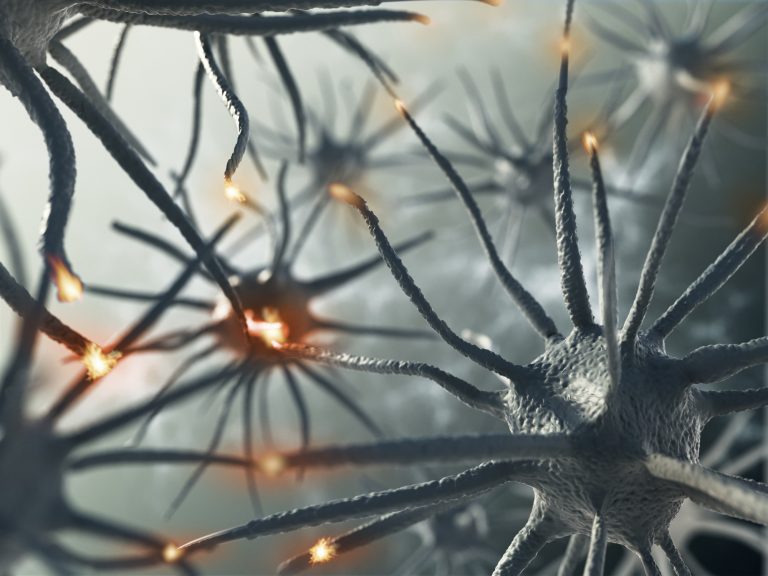
Researchers at the University of Cambridge have demonstrated how gene therapy might help to repair some of the damage caused by chronic neurodegenerative conditions such as glaucoma and dementia. Their studies in rodents demonstrated how delivering two genes simultaneously using a single vector stimulated axonal transport in a humanized tauopathy model of Alzheimer’s disease, and in an experimental glaucoma model.
Encouragingly, the results, reported in Science Advances, showed “promising evidence” that the gene therapy might result in improvement in short-term memory in the tauopathy model of dementia. The team said the studies also highlight the potential effectiveness of gene therapy for treating complex polygenic conditions that have no single genetic cause.
The study was led by Keith Martin—now professor and head of ophthalmology, University of Melbourne and managing director at Centre for Eye Research Australia—while he was professor and head of ophthalmology and deputy director of the Centre for Brain Repair at Cambridge. Martin stated, “While this is currently early-stage research, we believe it shows promise for helping to treat neurodegenerative diseases that have so far proved intractable. Gene therapy has already proved effective for some rare monogenic conditions, and we hope it will be similarly useful for these more complex diseases which are much more common.” Martin and colleagues described their work in a paper titled, “Receptor-ligand supplementation via a self-cleaving 2A peptide–based gene therapy promotes CNS axonal transport with functional recovery.”
Gene therapy—through which a missing or defective gene is replaced by a healthy version—is leading to what the authors called “a revolution in the treatment of previously debilitating monogenic neurological conditions,” including Leber’s congenital amaurosis, spinal muscular atrophy, and Leber’s hereditary optic neuropathy. However, each of these conditions, caused by a single defective gene, is rare, and the application of gene therapy to complex polygenic conditions, which make up the majority of neurodegenerative diseases, has been limited to date.
Axons are long fibers that transmit electrical signals, allowing nerve cells to communicate with other nerve cells and muscles. A common feature of neurodegenerative diseases is disruption of axonal transport, a cellular process responsible for movement of key molecules and cellular “building blocks” including mitochondria, lipids, and proteins to and from the body of a nerve cell. Scientists have suggested that stimulating axonal transport by boosting certain neuronal processes in the central nervous system might be a way to repair damaged nerve cells in some diseases.
“Disruption of axonal transport is a hallmark of neurodegenerative disease, and stimulating axonal transport with the enhancement of intrinsic neuronal growth mechanisms in the diseased central nervous system (CNS) has been proposed as a promising strategy to improve neuronal repair,” the authors wrote.
Study first author, Tasneem Khatib from the John van Geest Centre for Brain Repair at the University of Cambridge, further explained, “The axons of nerve cells function a bit like a railway system, where the cargo is essential components required for the cells to survive and function. In neurodegenerative diseases, this railway system can get damaged or blocked.” Previous work had indicated that brain-derived neurotrophic factor (BDNF) and its receptor tropomyosin receptor kinase B (TrkB), represented two candidate molecules for improving axonal function in injured nerve cells. “We reckoned that replacing two molecules that we know work effectively together would help to repair this transport network more effectively than delivering either one alone, and that is exactly what we found,” Khatib added.
The eye disease glaucoma results in damage to the optic nerve and is often, but not always, associated with abnormally high pressure in the eye. The researchers used a tracer dye to show that axonal transport between the eye and brain was impaired in an animal model of glaucoma. Similarly, a reduction in electrical activity in the retina in response to light suggested that vision was also impaired in this animal model.
Khatib and colleagues used a viral vector system to deliver both TrkB and BDNF to the retina of the glaucoma model rats. “Rather than using the standard gene therapy approach of replacing or repairing damaged genes, we used the technique to supplement these molecules in the brain,” Khatib stated. The results indicated that the treatment restored axonal transport between the retina and the brain, as observed by movement of the dye. The retinas also showed an improved electrical response to light, a key prerequisite for visual restoration.
Next, the team turned to transgenic mice bred to model tauopathy, the build-up of tangles of tau protein in the brain. Tauopathy is seen in a number of neurodegenerative diseases, including Alzheimer’s disease and frontotemporal dementia. Once again, injection of the dye in these animals showed that axonal transport was impaired between the eye and the brain—and again, this was restored using the viral vector-delivered gene therapy.
Intriguingly, the team also found preliminary evidence of possible improvement in the short-term memory of the gene therapy-treated tauopathy mice. Prior to treatment, the researchers tested the mice on an object recognition task. An animal was placed at the start of a Y-shaped maze and left to explore two identical objects at the end of the two arms. After a short while, the mouse was once again placed in the maze, but this time one arm contained a new object, while the other contained a copy of the repeated object. The researchers measured the amount of time the mouse spent exploring each object to see whether it had remembered the object from the previous task.
The results of repeating this task after the two genes had been delivered into the brain were suggestive of a small improvement in short-term memory. While the results did not quite achieve statistical significance, the researchers say the findings are promising, and a larger study is now planned to confirm the effect.
The team’s experiments demonstrated that delivering both of these molecules simultaneously to nerve cells using a single vector resulted in a stronger effect in stimulating axonal transport, when compared with delivering either molecule on its own. “Here, we offer evidence that the combined overexpression of both BDNF and its receptor TrkB, by a single vector with one promoter, is more effective in stimulating anterograde axonal transport than either receptor administration or ligand administration alone,” the investigators further noted. “Simultaneous administration of a ligand and its receptor by a single gene therapy vector overcomes several problems relating to ligand deficiency and receptor down-regulation that may be relevant to multiple neurodegenerative diseases ….” Khatib added, “This combined approach also leads to a much more sustained therapeutic effect, which is very important for a treatment aimed at a chronic degenerative disease.”
The scientists concluded, “Given the recent correlation between Alzheimer’s pathology in the brain and retina, this approach shows promise as an overall strategy to target intrinsic neuronal mechanisms to improve neuronal repair while overcoming several problems relating to ligand deficiency and receptor down-regulation and dysfunction that may be relevant to multiple neurodegenerative diseases.”













